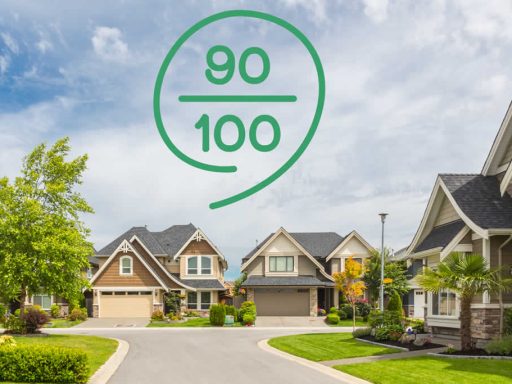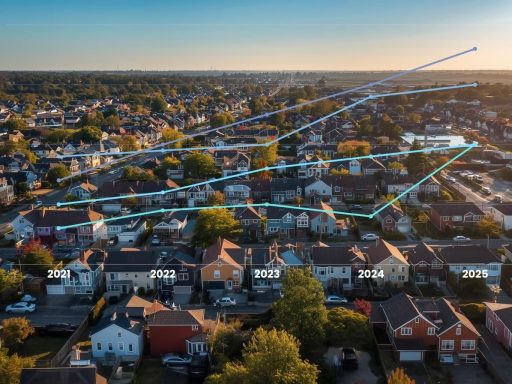A New Era of Small-City Growth
Over the past five years, America’s demographic story has quietly shifted away from its largest metro areas and toward smaller, fast-growing cities that offer affordability, space, and a more balanced way of life. New Census data for 2024 shows that small and mid-sized communities—often located on the edges of major metros—are capturing a remarkable share of national population growth. These cities combine livability, economic opportunity, and lower costs in ways that appeal to today’s homebuyers, remote workers, and young families seeking value without sacrificing convenience.
For real estate professionals and movers alike, understanding where growth is accelerating provides a clearer picture of which areas are emerging as tomorrow’s high-potential markets. Using the latest Census estimates, here are the fastest-growing cities in the country—and the reasons behind their rapid rise.
The Fastest-Growing Cities of 2024
According to U.S. Census Bureau population estimates, the top fifteen fastest-growing cities (with a population over 20,000) delivered extraordinary year-over-year growth. Many of them are located in the Sun Belt, especially Texas, Florida, and North Carolina, which continue to dominate migration trends.
1. Princeton, Texas — 30.6% growth (Population: 37,019)
Princeton tops the list with extraordinary growth fueled by explosive development in the Dallas–Fort Worth region. Affordable new housing, expanding retail corridors, and proximity to major employment centers continue to draw both families and remote workers.
2. Fulshear, Texas — 26.9% growth (Population: 54,629)
Once a rural outpost, Fulshear has become one of the Houston area’s most desirable suburban communities. Master-planned developments, strong schools, and abundant new construction are accelerating its population boom.
3. Leesburg, Florida — 18.5% growth (Population: 37,815)
Leesburg’s rise is tied to Central Florida’s ongoing housing expansion. Its relative affordability compared with Orlando’s core, combined with growing healthcare and retail sectors, has made it a prime destination for both retirees and working families.
4. Celina, Texas — 18.2% growth (Population: 51,661)
Celina is one of North Texas’ breakout cities. Rapid commercial development, new schools, and highway expansions have transformed it into a highly desirable community for those priced out of neighboring Frisco and McKinney.
5. Anna, Texas — 14.6% growth (Population: 31,986)
Another Collin County standout, Anna’s steady growth is driven by affordable new homes and access to the economic engine of the broader DFW metro area.
6. Haines City, Florida — 12.1% growth (Population: 42,073)
Situated between Tampa and Orlando, Haines City offers strategic access to multiple job markets. Its tourism-adjacent economy and rapid new construction have made it a Central Florida growth leader.
7. Foley, Alabama — 12.0% growth (Population: 28,043)
Foley is one of Alabama’s most surprising growth stories. Located near Gulf Coast beaches and driven by retail, hospitality, and manufacturing expansion, its population surge reflects rising interest in coastal-adjacent, affordable living.
8. Fate, Texas — 11.4% growth (Population: 27,467)
In the fast-developing eastern Dallas corridor, Fate offers small-town charm with master-planned suburban convenience. Strong schools and new home communities continue to fuel steady in-migration.
9. Rosemount, Minnesota — 10.6% growth (Population: 30,581)
Rosemount is proof that fast-growing small cities aren’t exclusive to the South. Its growth reflects the broader Twin Cities expansion, strong local schools, and continued suburban development.
10. Garner, North Carolina — 10.4% growth (Population: 39,345)
Just outside Raleigh, Garner benefits from the Research Triangle’s surging economy. A mix of affordability, job access, and ongoing infrastructure investment supports strong demand.
11. Melissa, Texas — 10.0% growth (Population: 26,194)
Melissa’s rise follows the growth arc of Collin County. Families seeking highly rated schools and spacious housing continue to flock to this emerging suburban hub.
12. Sugar Hill, Georgia — 9.5% growth (Population: 28,598)
Located northeast of Atlanta, Sugar Hill blends suburban convenience with a rapidly developing downtown district. Its growing arts, parks, and recreation offerings support broad demographic appeal.
13. Hutto, Texas — 9.4% growth (Population: 42,661)
Part of the Austin metro, Hutto is benefiting from Central Texas’ booming tech and manufacturing sectors. Access to employment, new home communities, and regional infrastructure upgrades drive consistent growth.
14. Leland, North Carolina — 9.4% growth (Population: 34,451)
Near Wilmington, Leland has quickly become one of Coastal Carolina’s most desirable suburban areas. Its growth is driven by retirees, remote workers, and families seeking coastal living without coastal prices.
15. Erie, Colorado — 9.2% growth (Population: 38,594)
Erie is one of Colorado’s strongest up-and-coming small cities. Located between Denver and Boulder, it offers scenic living, expanding amenities, and access to two major job centers, making it a magnet for professionals and families.
| Rank | City (Town) | State | Increase | Population |
|---|---|---|---|---|
| 1 | Princeton | TX | 30.6% | 37,019 |
| 2 | Fulshear | TX | 26.9% | 54,629 |
| 3 | Leesburg | FL | 18.5% | 37,815 |
| 4 | Celina | TX | 18.2% | 51,661 |
| 5 | Anna | TX | 14.6% | 31,986 |
| 6 | Haines City | FL | 12.1% | 42,073 |
| 7 | Foley | AL | 12.0% | 28,043 |
| 8 | Fate | TX | 11.4% | 27,467 |
| 9 | Rosemount | MN | 10.6% | 30,581 |
| 10 | Garner (Town) | NC | 10.4% | 39,345 |
| 11 | Melissa | TX | 10.0% | 26,194 |
| 12 | Sugar Hill | GA | 9.5% | 28,598 |
| 13 | Hutto | TX | 9.4% | 42,661 |
| 14 | Leland (Town) | NC | 9.4% | 34,451 |
| 15 | Erie (Town) | CO | 9.2% | 38,594 |
Why These Small Cities Are Growing So Quickly
Several patterns emerge when examining the fastest-growing cities in America—and they align closely with Proximitii’s hyperlocal data trends.
Cost of Living and Housing Value
Nearly every city on the list offers significantly lower housing costs than the nearest major metro area. For example, the Dallas suburbs leading this ranking provide new construction at prices far below central Dallas or Plano. Florida’s rapidly growing small cities offer alternatives to Orlando and Tampa where cost pressures are rising.
Lower overall cost of living—across groceries, transportation, property taxes, and utilities—plays a major role in these migration surges. People aren’t just seeking cheaper housing; they’re seeking better value, where everyday lifestyle costs align with income.
Proximity to Major Job Markets
All fifteen cities sit within commuting distance of larger metros, allowing residents to enjoy suburban space without sacrificing employment access. This “near-metro advantage” makes small cities particularly appealing for hybrid workers.
Quality-of-Life Factors
Across these markets, Census data intersects with Proximitii’s long-established livability indicators:
-
new parks and recreation investments
-
emerging downtown districts
-
expanding retail centers
-
stronger school ratings
-
well-planned master-planned communities
These areas aren’t just growing fast—they’re growing deliberately, with infrastructure and amenities designed to support rising populations.
Remote Work Flexibility
Remote and hybrid work continue to enable families and professionals to live farther from urban cores. People who once felt tied to dense city environments are increasingly choosing small-city lifestyles that offer space, affordability, and community.
What This Means for Buyers and Agents
For homebuyers, understanding these growth patterns is crucial. Early movers into rapidly developing cities often benefit from rising home values, expanding amenities, and improved long-term livability.
For real estate professionals, these markets represent opportunities to serve clients seeking affordability and lifestyle alignment. Knowing which small cities are emerging—and why—helps agents position themselves as trusted local experts.
The combination of Census data and Proximitii’s neighborhood-level insights creates a clear picture: the most dynamic growth in America is happening outside the traditional metro spotlight, in communities that offer the strongest blend of cost, convenience, and quality of life.






